Affiliate links on Android Authority may earn us a commission. Learn more.
Nexus 6P vs Nexus 6 quick look
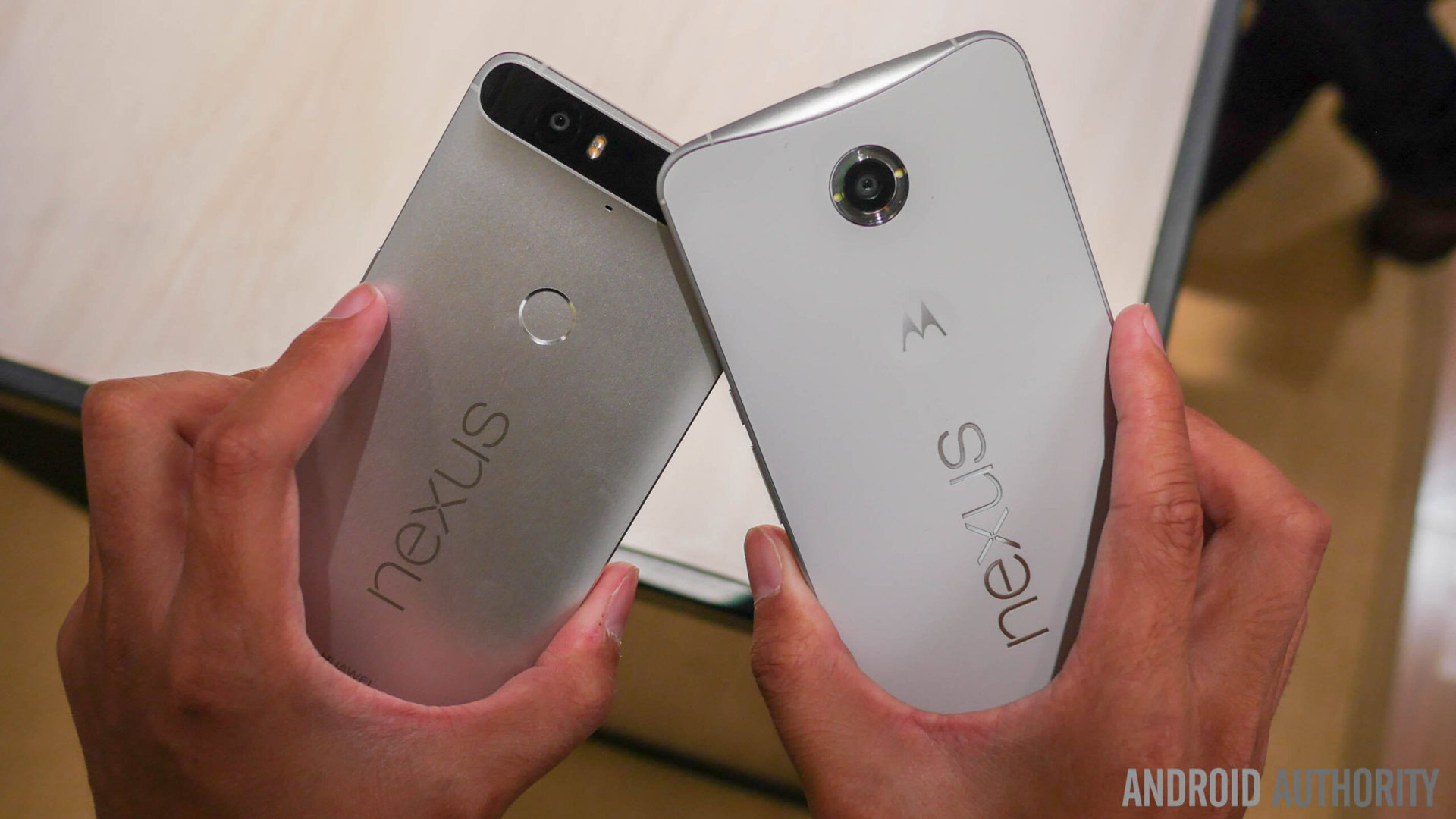
As good as the Nexus 6 may have been, it’s large size was considered a turn off by many, but this year Google looks to rectify this by giving consumers more options. When Google took the wraps off of their latest and greatest at an event earlier today, there wasn’t just one, but two new Nexus smartphones for consumers to choose between. While there is a great, affordable option available for those that would prefer the pure Android experience on a smaller display in the Nexus 5X, the successor to the Nexus 6 is the HUAWEI-manufactured Nexus 6P.
There is always some curiosity with regards to whether a new iteration will prove to be a worthy successor, and that is what we attempt to find out, as we take a quick look at the Nexus 6P vs Nexus 6!
Design
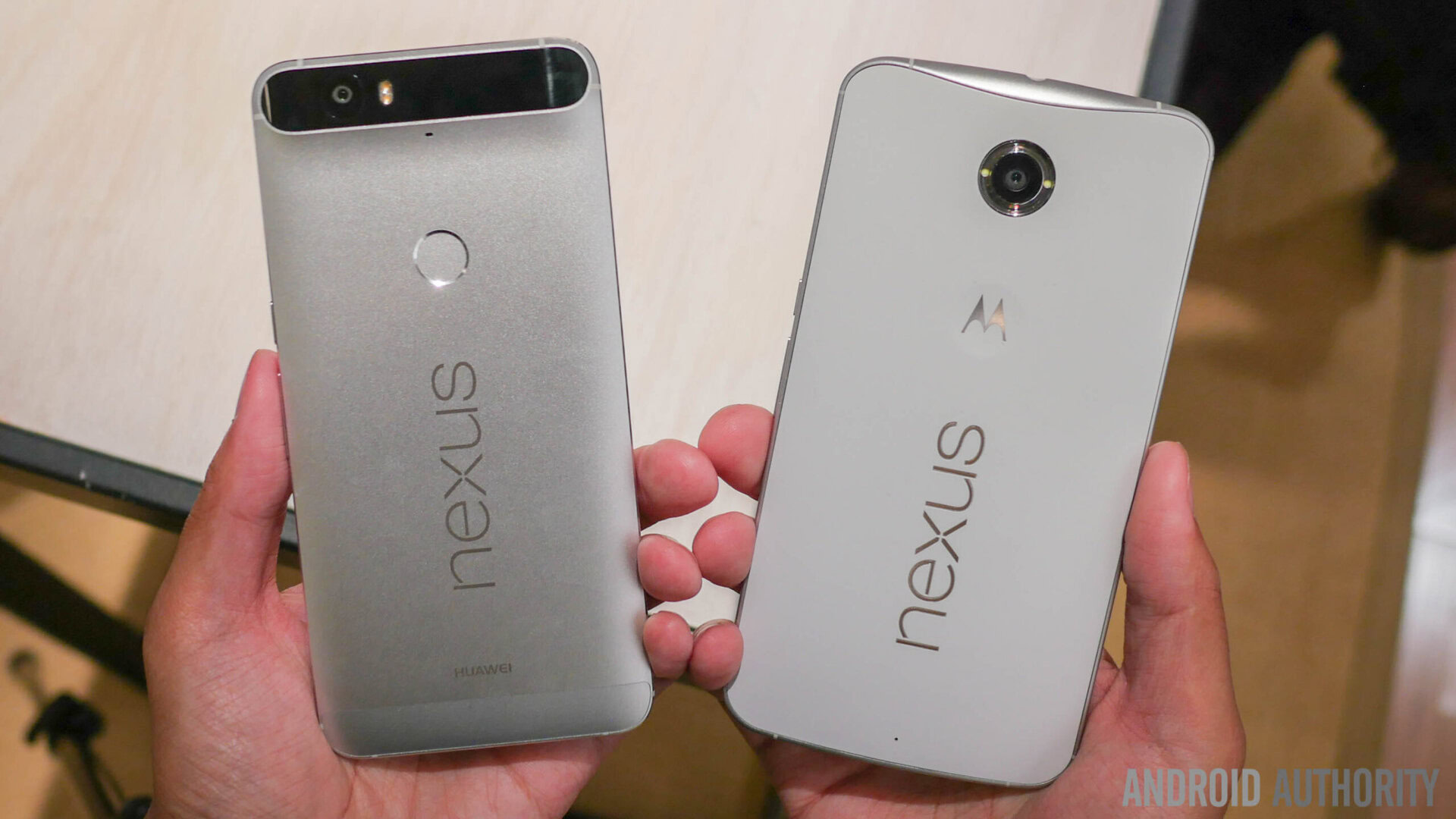
While there was a larger focus on function over form with previous generations of the Nexus line, that all changed with the Nexus 6 made by Motorola, which brought with it premium design elements like a metal frame, and an overall classy and elegant look that borrowed heavily from the design language of Motorola’s flagships at the time.
While its curved back did help with the handling experience, the 6-inch display and resulting large footprint did make for a rather unwieldy smartphone. The update to the build quality and design commanded a premium price point as well, which was also a departure from the previous Nexus standard.
Pleasantly surprising is the fact that the Nexus 6P isn’t as expensive as its predecessor, but that is fortunately not an indication of a drop in build quality. In fact, it is quite the opposite, with the Nexus 6P featuring an arguably more premium full metal unibody design, while also adding a few key elements to bring the device at par with current and future security and technology standards.
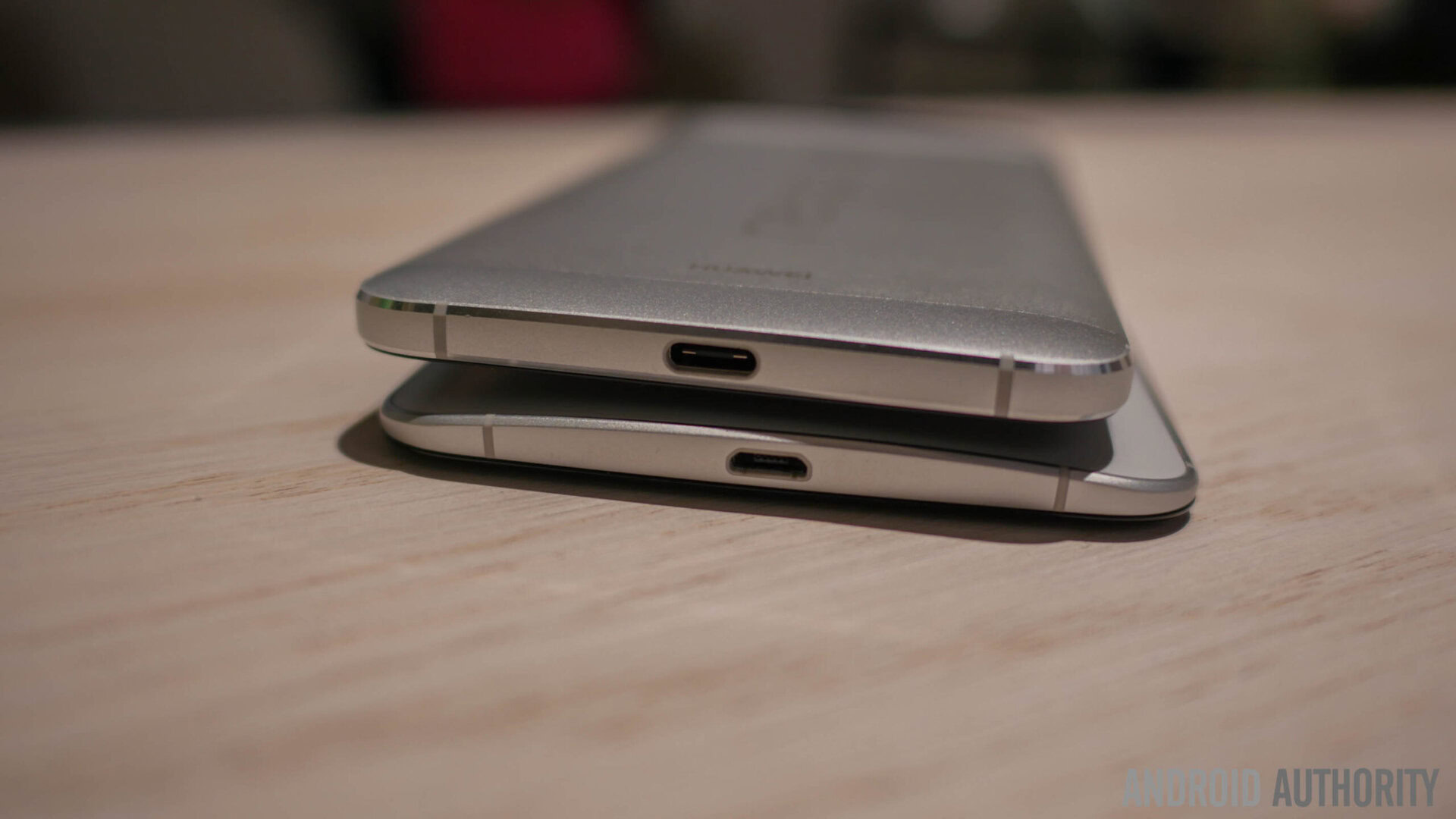
The vertically-orientated Nexus logo is found once again on the back, but that is all that remains similar, with the camera module on the Nexus 6P now housed in a black window at the top, below which is the newly added fingerprint scanner. At the bottom shows Google’s adoption of the latest USB Type-C standard, but like its predecessor, also available is the dual-front facing speaker setup.
With the Nexus 6P featuring a slightly smaller display than the Nexus 6, the former is unsurprisingly less wide and slightly shorter than the latter. The Nexus 6P is also significantly thinner than its predecessor, at least when comparing it to the Nexus 6 at its thickest point, and weighs about the same, allowing for a substantial feel in the hand, while enhancing the handling experience of the still rather large smartphone.
The good news is that there is a smaller, solid option available for those who want it, but for anyone that loved what Google started with the Nexus 6, the Nexus 6P certainly continues to take that in the right direction, as far as design and build quality is concerned. Even better, the handling is much improved this time around and so for those felt the Nexus 6 was just a tiny bit too big, the Nexus 6P might be a better match.
Display
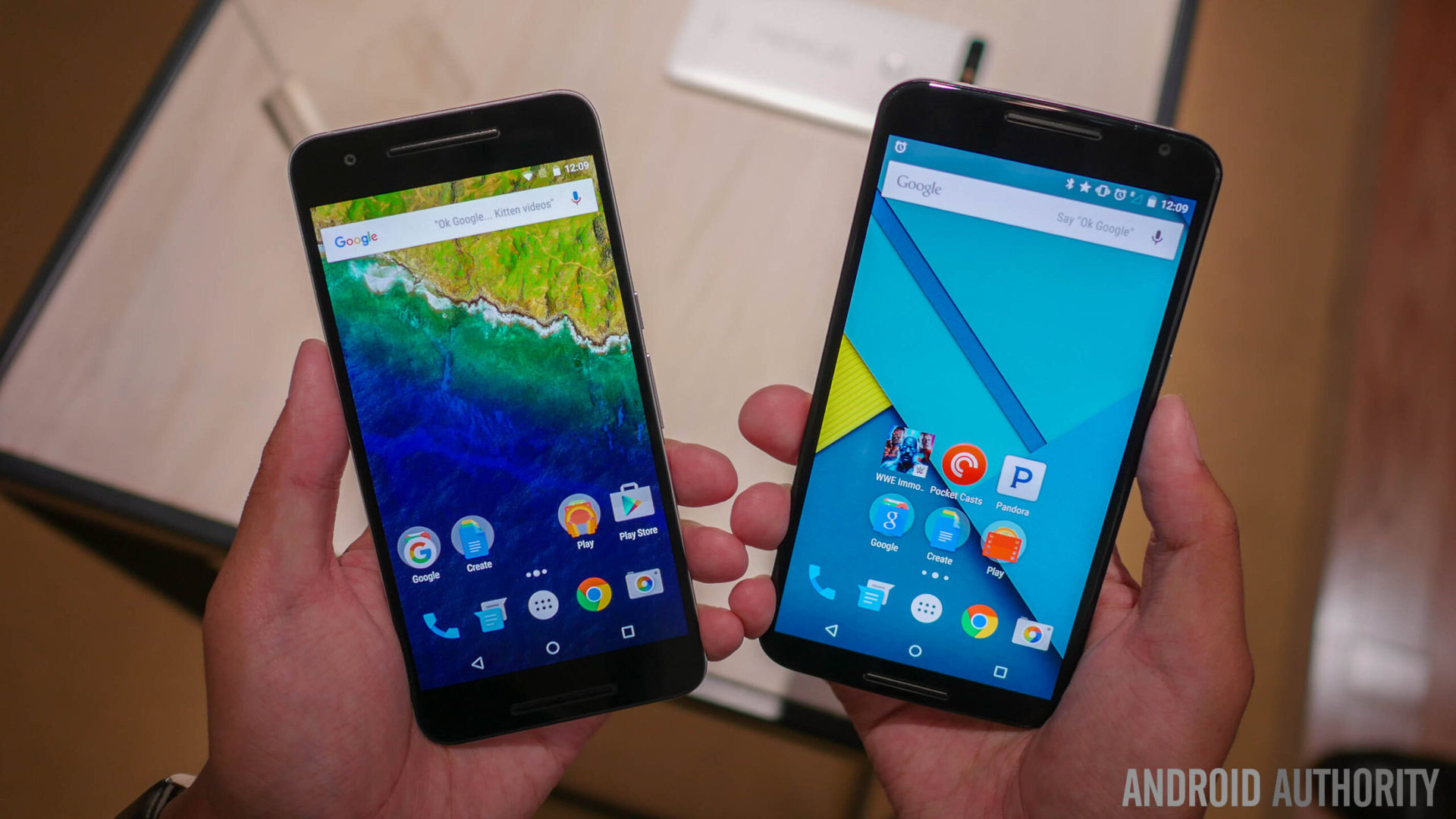
Both the Nexus 6 and Nexus 6P feature AMOLED displays with a Quad HD resolution, with the difference in size, 5.96-inches for the Nexus 6 and 5.7-inches for its successor, resulting in different pixel densities of 493 ppi and 515 ppi respectively, which is a bump that is hardly going to be noticeable. We can expect the deep blacks, saturated colors, fantastic viewing angles, and the high brightness that are associated with AMOLED technology, and given the fact that the Nexus 6 allowed for a fantastic display experience that really took advantage of the additional real estate, that should continue to be the case with the Nexus 6P.
Worth mentioning here is that the protection afforded the display of the Nexus 6P has seen an upgrade as well, with a Corning Gorilla Glass 4 panel to be found this time around, that should do an even better job of keeping things scratch-free, compared to the Corning Gorilla Glass 3 seen with the Nexus 6.
Performance and hardware
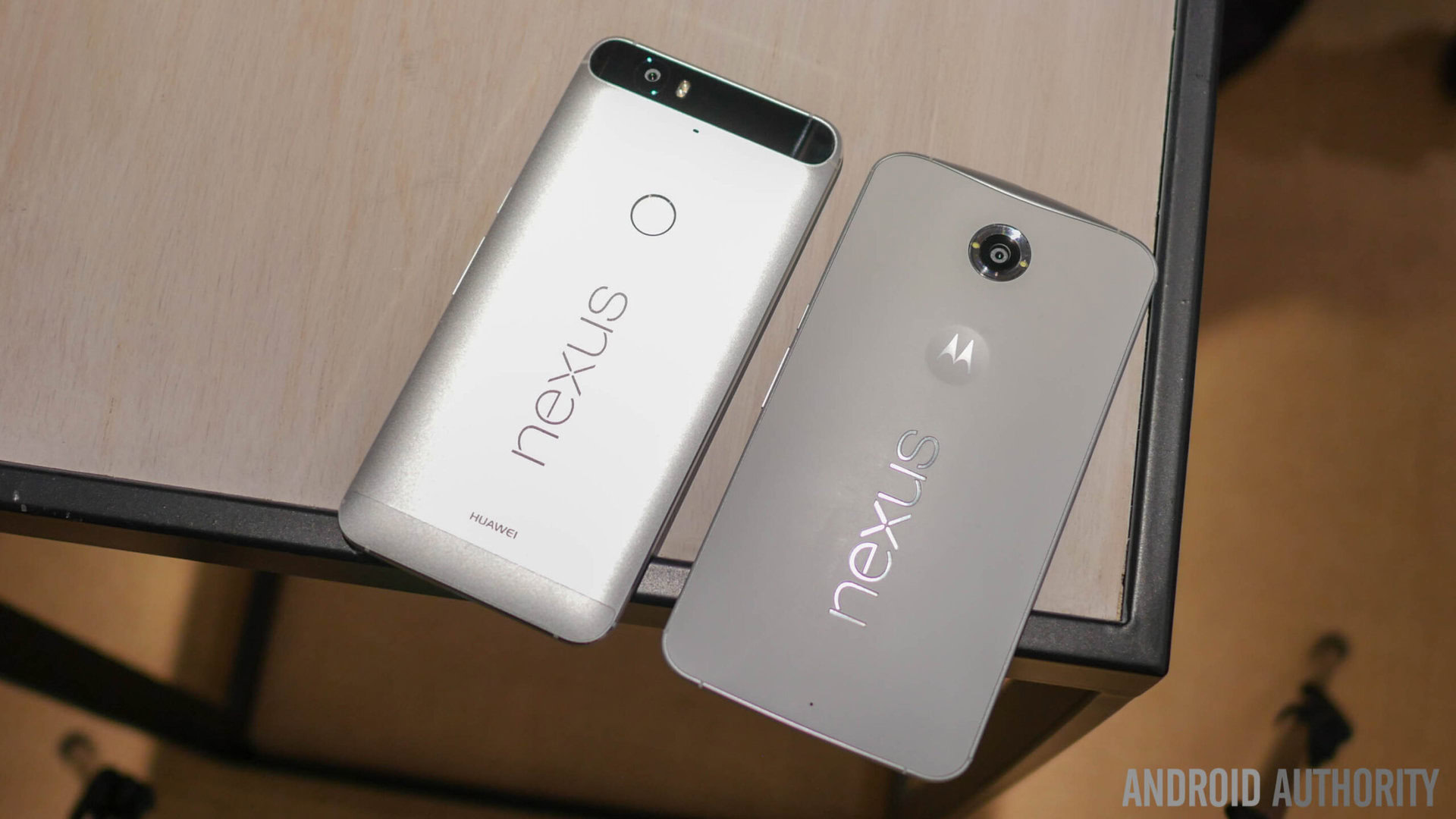
Under the hood, the Nexus 6P packs the latest and greatest that Qualcomm has to offer, with its octa-core Qualcomm Snapdragon 810 processor, clocked at 1.82 GHz, and backed by the Adreno 430 GPU and 3 GB of RAM. This is one of the best processing packages currently available, and with a stock Android software experience on-board, performance should be as snappy and smooth as ever. An additional gig of RAM is what some may have hoped for, but 3 GB should more than get the job done as far as multi-tasking is concerned, as is evident in the case of the Nexus 6.
Speaking of the Nexus 6, the previous Google flagship is no slouch in the performance department either. Featuring a quad-core Qualcomm Snapdragon 805 processor, clocked at 2.7 GHz, and backed by the Adreno 420 GPU and 3 GB of RAM, the Nexus 6 continues to impress when it comes to performance, and the Nexus 6P gets the nod in this category mainly by virtue of the fact that its processing package is the newer of the two.
With microSD expansion going by the wayside with the Nexus line, Google decided to bump the lowest storage option to 32 GB with the Nexus 6, with a 64 GB iteration available as well for those looking for something more. Continuing along those lines, the Nexus 6P, along with 32 GB and 64 GB options, also adds a 128 GB iteration, to alleviate any concerns one might have with regards to available storage. Keep in mind that new Nexus owners will also be able to take advantage of an additional 100 GB of Google Drive cloud storage as well.
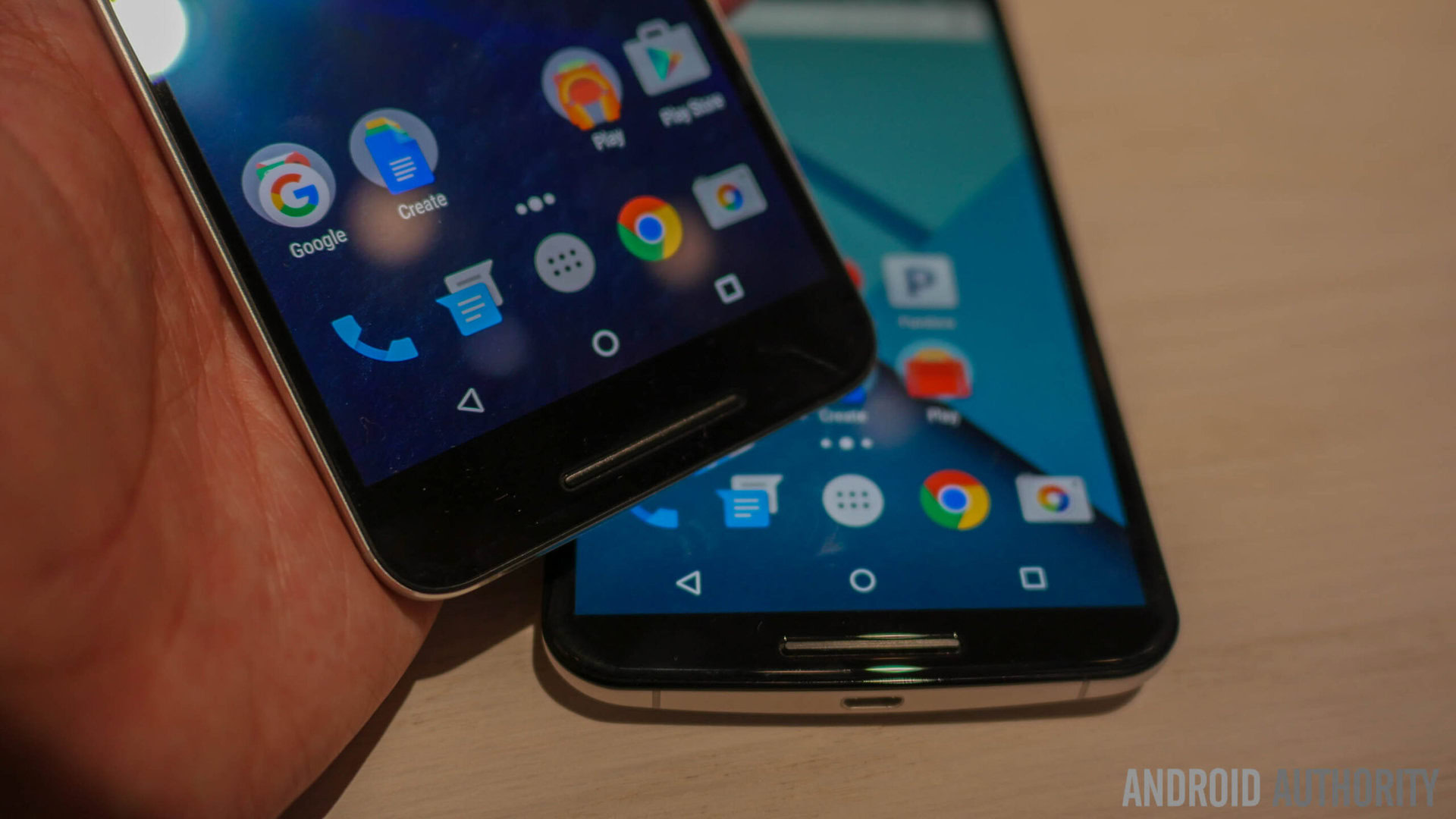
While the Nexus 6 included all the necessary hardware and connectivity features without cutting any corners, Google does manage to throw some extras into the mix this time around with the Nexus 6P. For starters, the device now comes with a touch-type fingerprint scanner placed on the back of the device, which is an implementation that HUAWEI has employed very successfully in the past with their own latest flagships. This positioning is actually quite ideal, with it being where the index finger would normally rest, and while more testing will of course be required, this fingerprint scanner should work extremely well, if the quality seen with devices like the HUAWEI Mate S is any indication.
Following the OnePlus 2, the new Nexus flagships are the latest smartphones to adopt the USB Type-C standard, but unlike the OnePlus flagship, the Nexus 6P is capable of fast charging, which is always a plus. As far as the batteries are concerned, the Nexus 6P features a slightly larger 3,450 mAh battery, compared to the 3,220 mAh unit of the Nexus 6.
The battery life available with the Nexus 6 has seen some improvement over time with some software updates, and should continue to get better with the new Doze feature that will make its way to the device with the upcoming Android 6.0 Marshmallow update. This is a feature that the Nexus 6P will be able to take advantage of out of the box, and with its slightly smaller display and tad larger battery, the battery life of the Nexus 6P should impress. Quite unexpectedly however, wireless charging is no longer a feature with the latest Nexus smartphone, but is available with its predecessor.
Camera
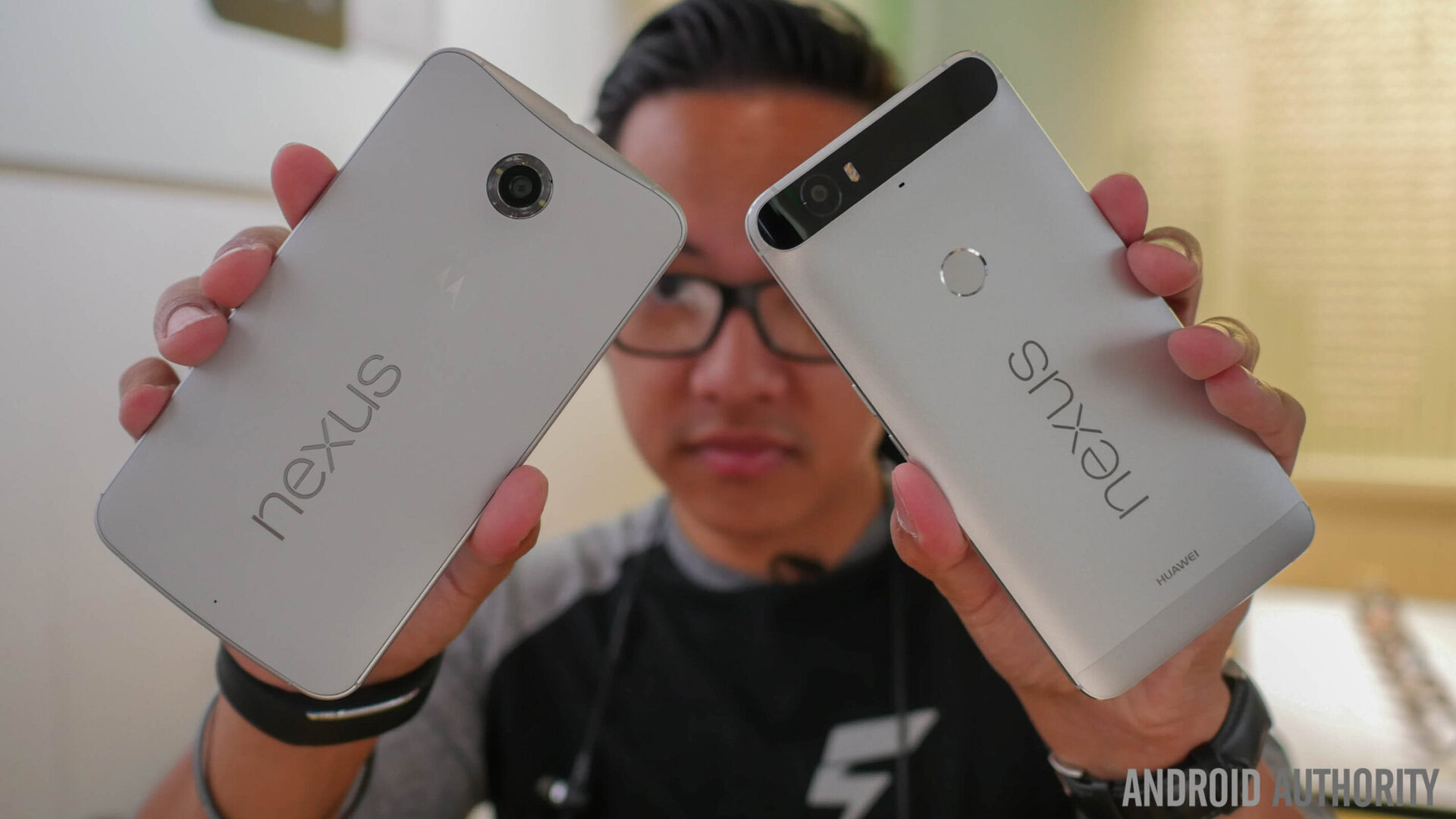
One point of contention with the Nexus line was unfortunately the camera, but that changed with the Nexus 6, that brought with a dramatic improvement in this aspect. Packing a 13 MP rear camera with a dual LED flash and optical image stabilization, the Nexus 6 allowed for some fairly decent shots, especially outdoors, and while the camera software remained quite minimalistic, whatever features it did bring certainly enhanced the experience.
That said, we’ve seen some huge steps being taken in the smartphone camera department this year, with the current crop of flagships from OEMs like Samsung and LG setting an incredibly high standard. Google’s attempt to match up to that standard comes in the form of a 12.3 MP primary shooter with a dual LED flash and laser-guided auto focus system, along with a f/2.0 aperture, and a larger 1.55µm cell size, allowing for more light to reach each pixel, albeit at the expense of total pixel count. We can’t wait to put this camera through its paces to see how it stacks up against the intense competition, but one cause for concern may be the lack of the very useful OIS with the Nexus 6P.
The front-facing camera has seen a significant bump though, from the 2 MP camera of the Nexus 6, with the Nexus 6P boasting an 8 MP front-facing shooter, which should certainly help better your selfie game.
Software
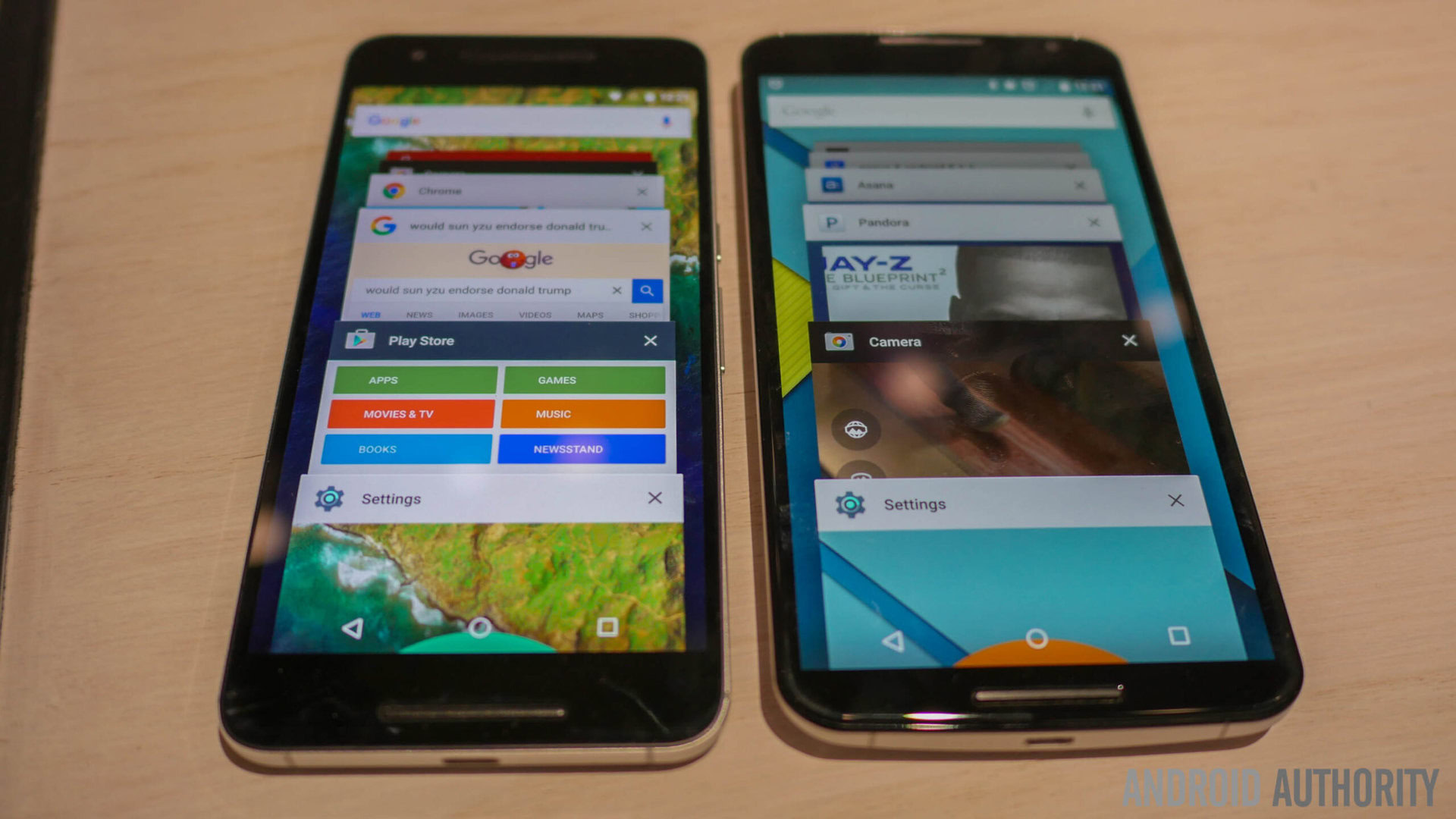
The Nexus 6P will run Android 6.0 Marshmallow out of the box, and with the Nexus 6 expected to be one of the first smartphones to receive the official upgrade to the latest version of Android next week, the software experience with both smartphones will be almost identical, save for some additional features with the Nexus 6P that take advantage of the fingerprint scanner, which Google is calling Nexus Imprint, that, apart from unlocking your device, will also come with compatibility with Android Pay.
From an aesthetic point of view, Android 6.0 Marshmallow isn’t a dramatic departure from Android 5.0 Lollipop, aside from some minor changes to the app drawer and launcher. Where the latest version of the Android OS really shines is through improved battery management, bug fixes, the Google Now on Tap feature, and the introduction of numerous new APIs offering support for fingerprint scanners and more. Android 6.0 Marshmallow also adds greatly improved permissions, allowing you much more granular control over what parts of your phone experience your apps have access to.
Conclusion at a glance
Google took everyone by surprise when the price point of the Nexus 6 was announced last year, with the base 32 GB model setting you back $649. Google has certainly adopted a wallet-friendlier pricing strategy this time around however, with the Nexus 6P starting at just $499, and going up to $649 for the 128 GB version.
So there you have it for this quick look at the Nexus 6P vs Nexus 6! The latest premium Nexus smartphone is certainly a worthy successor to the impressive Nexus 6, with its more refined and elegant design and build quality, updated processing package and hardware features that fit better into the current smartphone landscape, and larger battery.
Some surprising omissions come in the form of the lack of optical image stabilization and removal of wireless charging, but how much that affects the overall experience is something we will find out soon as we give the Nexus 6P, and its smaller sibling, the full review treatment in the weeks to come.
What do you think of the new Nexus 6P, how do you feel it compares to the original Nexus 6?